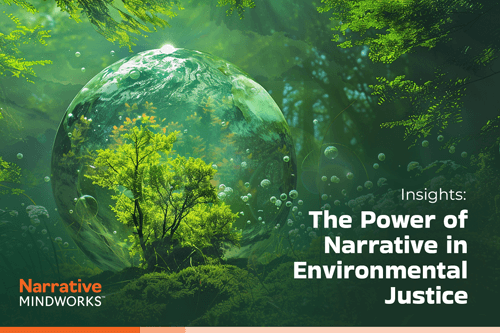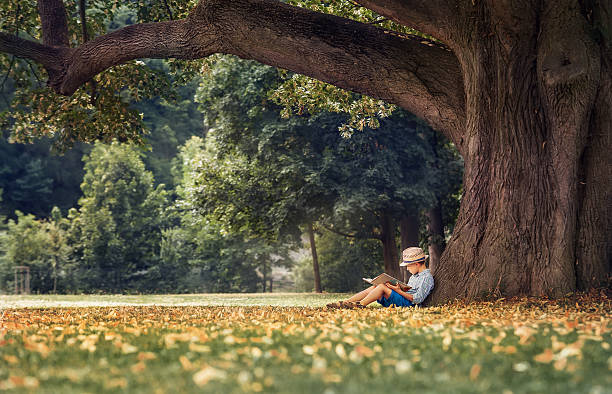Environmental justice has had remarkable success grabbing headlines and capturing consensus in a world full of competing local and national interests. Environmental narratives fill the headlines and have been highly successful in mobilizing diverse groups in common cause and advocacy for equitable distribution of environmental benefits, burdens, representation, and decision-making. One very powerful tool in this movement is data informed through narrative based storytelling.
 From “No Country for Eight-Spot Butterflies: A Lyric Essay” by Julian Aguon, to Deutsche Welle’s podcast Living Planet, nature narratives like these are playing crucial roles in environmental justice advocacy and organizing. Here’s why:
From “No Country for Eight-Spot Butterflies: A Lyric Essay” by Julian Aguon, to Deutsche Welle’s podcast Living Planet, nature narratives like these are playing crucial roles in environmental justice advocacy and organizing. Here’s why:
- Authentic Experiences : These stories remind us that everyone has unique and valid experiences to share. In a world of fast-paced headlines and social media, nature-based stories often invite us to slow down.
- Connecting Emotionally : Environmental justice information often conveyed through mainstream media can be fact-based and depersonalized. However, stories told by advocates “on the ground” allow us to appreciate a different kind of expertise. They connect us emotionally to the movement, making it more relatable and impactful.
- Challenging Authority : Before environmental justice gained mass recognition, stories—whether in pamphlets, surveys, slogans, or visual art—conveyed mostly localized experiences of environmental racism, and economic stratification. These narratives challenged the authority of scientific, political, economic, and academic institutions, by engaging the front lines of those most effected- citizen communities.
- Dual Perspective: storytelling operates on two fronts, understanding how to survive normative cultures that create toxicities while strategically connecting us with the financial and activist supports for socio-economically disenfranchised groups.
- Empowering Education: educators continue to message youth toward environmental justice through storytelling. Greta Thunberg’s two books, “No Person is too Small” and “The Climate Book: The Facts and the Solutions” exemplify a generational commitment to advocacy. Through sharing personal narratives, students often find common cause when the messenger is more like them.
Tales that Told it All
Both environmental memoir and non-fiction play crucial roles in shaping our perceptions and motivating action toward environmental issues. Compelling narratives bring both visibility to issues and drive change. Effective environmental campaigns often in part derive from inspiring and often tragic personal stories that go beyond perfunctory information dissemination—they inspire action, while fostering a sense of responsibility
Remarkable early narrative contributors to the field include Rachel Carson and Hazel Johnson, two influential pioneers in the realm of environmental management and justice: Rachel Louise Carson (1907–1964) was an American marine biologist, author, and environmentalist. Her groundbreaking book, “Silent Spring” (published in 1962), is considered one of the most influential environmental texts of the 20th century. It had a tremendous Impact: “Silent Spring” raised public awareness about the harmful effects of pesticides, particularly DDT, on wildlife, ecosystems, and human health.

(Photo: Rachel Carson)
Carson’s work, which she called “the poison book” led to increased scrutiny of pesticide use and ultimately contributed to the banning of DDT in the United States. “If we are living so intimately with chemicals—eating and drinking them, taking them into the very marrow of our bones—we had better know something about their nature and their power.” Carson’s scientific background and elegant writing had wide audience appeal. She was adept at weaving the interconnectedness of nature and humanity; fostering increased stewardship for our environment- where we all the beneficiaries..

“It’s like living in hell” said Hazel Johnson (1935–2011) in the early seventies, while testifing to the effects toxic pollution and hazardous waste had in her community. Johnson stood her ground against corporate and political opposition and became known affectionately as the “mother of the environmental justice movement.”. Johnson’s commitment to improving the environment began in her own community of Altgeld Gardens, a public housing project on the South Side of Chicago, when she discovered the project had the highest cancer rate in the city due to environmental neglect.

(Photo: Altgeld Gardens)
The housing project had been built on a landfill surrounded laden with chemicals. Taking matters into her own hands, Johnson founded the People for Community Recovery organization. She educated Altgeld Gardens residents about toxic waste, empowering them to play a positive role as front line advocates who recognized this grave environmental hazard. Johnson believed in environmental change on a global scale. She collaborated with the U.S. Environmental Protection Agency and urged President Clinton to sign the Environmental Justice Executive Order. Fearless in her activism, Johnson protested highly capitalized, and government supported private landfill corporations that threatened her community’s health. Hazel Johnson’s dedication to a cleaner and safer environment continues to be a role model in the ongoing fight for worldwide environmental justice.
Both Rachel Carson and Hazel Johnson exemplify the power that individual action can have in shaping environmental policies.
Effective Environmental Campaigning Strategies
Campaigns generally involve specific calls to action and are tailored to the target audience. Generic appeals tend to be less effective. For instance, instead of saying "Save the environment," a more impactful call to action has been "Reduce single-use plastics by using reusable bags." Behavioral Insights are essential in building action insights that most often nudge people toward eco-friendly choices. Often, they highlight the individual’s agency and positive impact they may have on a global scale through individual change.
These multi-channel approaches use social media, community events, and workshops to reach a wider audience. Consistent messaging across platforms is paramount to reinforcing a campaign's impact. For instance, saving money campaigns that emphasize how environmentally friendly actions can lead to cost savings. These resonate well with broad audiences often bringing in otherwise skeptical individuals. The “America Saves” campaign encouraged homeowners to adopt energy-saving practices based on real cost projections. Sharing relatable stories of individuals or communities affected by environmental challenges can evoke empathy and inspire action. And documentaries like “Years of Living Dangerously” and “Before the Flood” have effectively used storytelling to raise awareness about climate change. Painting positive visions of a more sustainable future show how collective efforts can lead to cleaner air, healthier ecosystems, and a better quality of life for all. In times of crisis (such as energy shortages or extreme weather events), campaigns can be particularly effective. Urgency prompts immediate action.
Selected Environmental Memoir and Nonfiction
Complementing organized environmental advocacy are the writers whose books usher us into spaces where we come to understand the implications human inflicted damage has caused to our fragile ecosystems.
“Rising" by Elizabeth Rush takes readers to the physical and cultural edges of the country, from marginalized communities like Isle de Jean Charles, Louisiana, to the glass castles of Facebook and Google in Silicon Valley. As high tide and massive storms become the new normal, those at the coasts, especially those with lower incomes, are most at risk of flooding and displacement due to climate change. Elizabeth Rush explores how we cope with this knowledge and the impending reality of climate refugees¹.
“The Ends of the World" Pete Brannen a science journalist examines the planet's five mass extinctions over millions of years. Using fossil records from around the world, his book provides insights into our past and portends our future. Brannen’s humor adds a personalized slant to major earth lifeform extension events.
"How to Give Up Plastic" by Will McCallum opens our viewfinder from the sea to the streets, where we see plastics pollution is a major global challenge affecting plant, animal and human life. McCallum provides an actionable guide for the individual, the private sector and governments in how to manage the debris.
“The Diversity of Life" by Edward O. Wilson the “father of biodiversity” will take you on a beautiful journey through world ecosystems and species.
“Braiding Sweetgrass: Indigenous Wisdom, Scientific Knowledge, and the Teachings of Plants” by Robin Wall Kimmerer is a member of the Citizen Potawatomi Nation and biologist. Kimmerer takes the reader on an exploration that couples both her heritage, and her people’s relation to the land. A meditative study full of wisdom of humanity’s reciprocal and integral relationship with the plant life that surrounds us.
“The Unlikely Thru-Hiker: An Appalachian Trail Journey” by comedian Derick Lugo: Lugo has no hiking experience but decides to hike the entire 2,190-mile Appalachian Trail. This is a travel memoir full of humor, foibles and the people he meets along the way.
“Refuge: An Unnatural History of Family and Place” an essay collection by Terry Tempest Williams: In the shadow of her mother’s terminal cancer diagnosis, daughter Williams, reflects on her family’s proximity to1950’s atomic bomb testing in Utah. She tells a story of mystery - of the flora and wildlife infected with radiation, and the tragedy it wrought. Compelling observations, and heartbreaking insights of the impact of manmade weapons designed to manage a violent world through peace and power, and how unintentionally, they destroyed the family and natural world of those they sought most to protect.
Enjoy reading at least one, and hopefully, a few of these excellent books!
Final Take
“One way to open your eyes is to ask yourself, "What if I had never seen this before? What if I knew I would never see it again?” Rachel Carson’s words remain as relevant today as when she first wrote them in 1962. Our lives and memories are entwined with the natural world. A few of my own inseparable memory reel vignettes play before me: a huge full harvest moon rising over the Atlantic ocean on a warm September night, the light so bright it casts shadows of my husband and I on the sand as we walk along the beach:
Today’s multi-channel environmental narratives connect either directly or indirectly with a reader or viewer’s own experience or remembrance. These hard tissue connections are highly effective in issue calls to action, protection and reclamation. But they also deliver invitations to enjoy and meditate on our good fortune to inhabit such a tremendous place. Our daily lives are often domiciled in digitally dominated domains of school, work, and entertainment. And it has never been more important to our mental and physical wellbeing —- the benefit of simple connection and grounding. After all, the natural world and we are fellow lifetime travelers.
For now, I’m going to heed the call of nature and head over to the park for a walk with my dog Henry.

(Photo: Central Park, New York)
Do you have something you want to publish? Narrative Mindworks membership is your platform. Questions? Contact us:
Notes:
- Empowering people to act: How awareness and behavior campaigns can .... https://www.iea.org/commentaries/empowering-people-to-act-how-awareness-and-behaviour-campaigns-can-enable-citizens-to-save-energy-during-and-beyond-today-s-energy-crisis.
- https://www.womenshistory.org/education-resources/biographies/rachel-carson
- https://www.chipublib.org/blogs/post/hazel-m-johnson-mother-of-the-environmental-justice-movement/
- Changing the Narrative around a Changing Climate | The Pursuit .... https://sph.umich.edu/pursuit/2019posts/changing-the-narrative-around-a-changing-climate.html
- https://www.theguardian.com/books/2022/sep/28/top-10-nature-memoirs-sarah-thomas-the-ravens-nest
- How to Build Better Calls to Action - Stanford Social Innovation Review. https://ssir.org/articles/entry/how_to_build_better_calls_to_action
- https://www.earthday.org/history/


